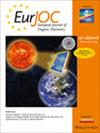Terpenes and Terpenoids: How Can we Use them?
IF 2.5
3区 化学
Q2 CHEMISTRY, ORGANIC
引用次数: 0
Abstract
The employed feedstocks in chemical processes received substantial attention over the past decades, mainly due to the popularity of Werpy’s list of top‐value added chemicals from biomass reported in 2004. The conventional fossil‐based feedstocks are both depleting and can be damaging to the environment. This led to a surge to replace petroleum‐based chemicals to more renewable, bio‐based platform chemicals. Terpenes and terpenoids are a group of bio‐based compounds that are well known. However, there comprehensive overviews of the chemistry that these compounds have been used for are scarce. Herein, we provide a full comprehensive overview of the reported chemistry with terpenes while specifically highlighting their reactivity. Fifteen of the most common and useful monoterpenes and terpenoids are discussed, followed by a list of the remaining known compounds belonging to this group. The fifteen compounds have been employed in a vast number of chemical transformations with different applications including: polymerizations, total syntheses, chiral reagents/auxiliaries, pharmaceuticals, and chemical conversion to other useful bio‐based chemicals. We believe that the presented chemistry in this work will provide chemists with a useful tool that should facilitate and stimulate the search for more sustainable, renewable and environmentally friendly starting points for novel synthesis routes.求助全文
约1分钟内获得全文
求助全文
来源期刊
CiteScore
5.40
自引率
3.60%
发文量
752
审稿时长
1 months
期刊介绍:
The European Journal of Organic Chemistry (2019 ISI Impact Factor 2.889) publishes Full Papers, Communications, and Minireviews from the entire spectrum of synthetic organic, bioorganic and physical-organic chemistry. It is published on behalf of Chemistry Europe, an association of 16 European chemical societies.
The following journals have been merged to form two leading journals, the European Journal of Organic Chemistry and the European Journal of Inorganic Chemistry:
Liebigs Annalen
Bulletin des Sociétés Chimiques Belges
Bulletin de la Société Chimique de France
Gazzetta Chimica Italiana
Recueil des Travaux Chimiques des Pays-Bas
Anales de Química
Chimika Chronika
Revista Portuguesa de Química
ACH—Models in Chemistry
Polish Journal of Chemistry.

 求助内容:
求助内容: 应助结果提醒方式:
应助结果提醒方式:


